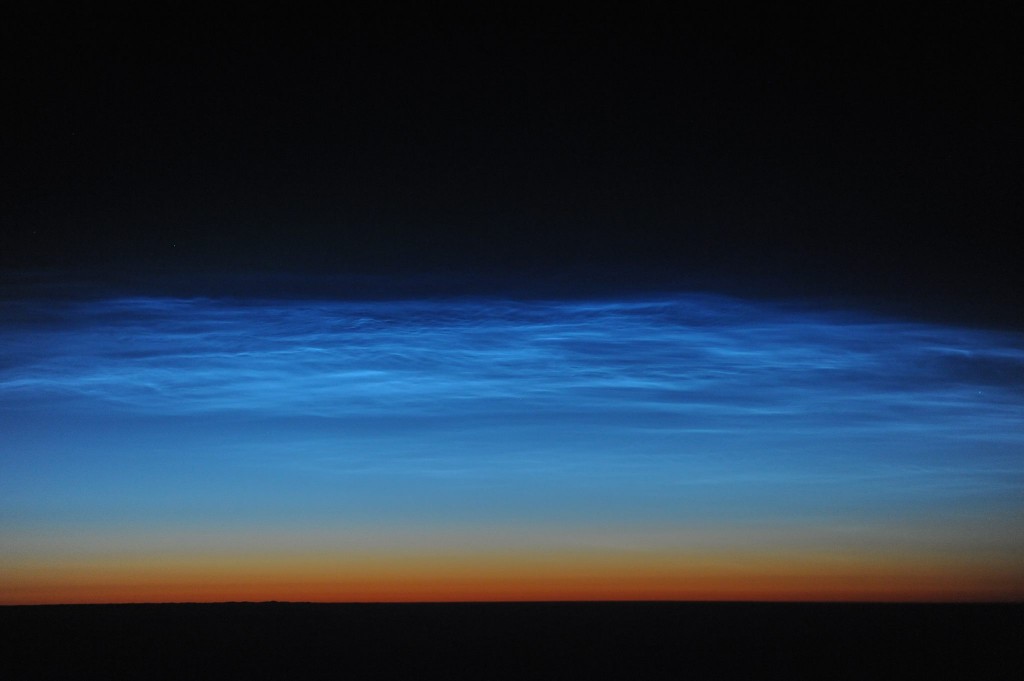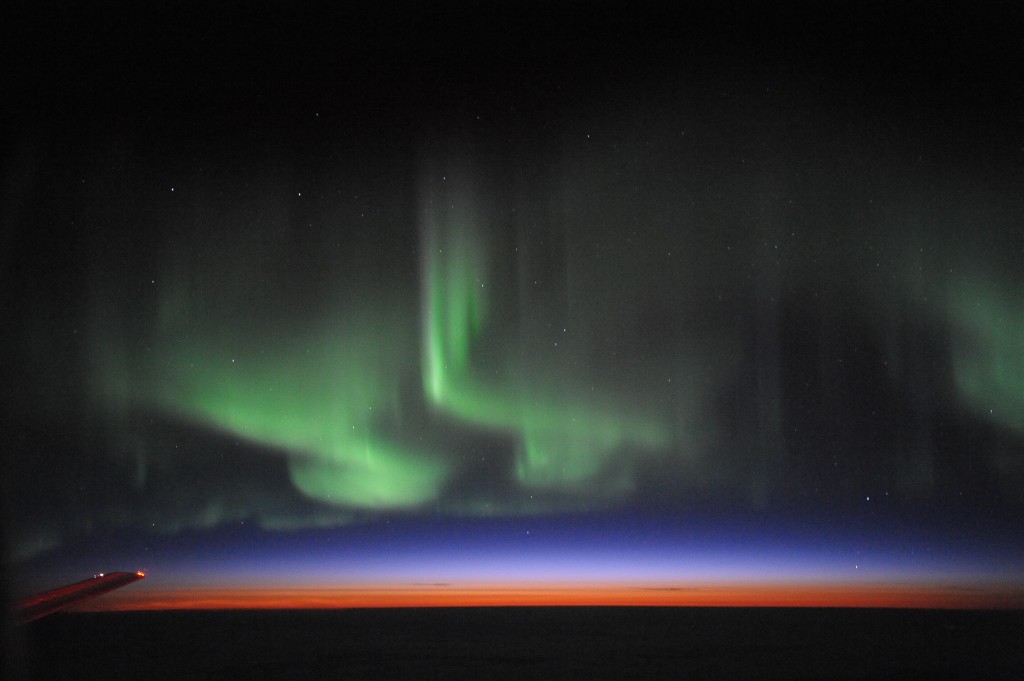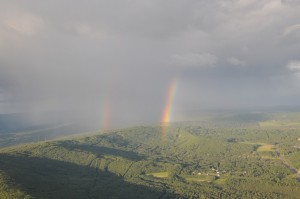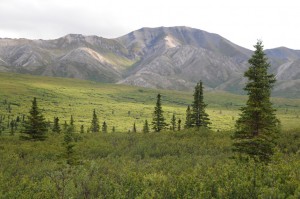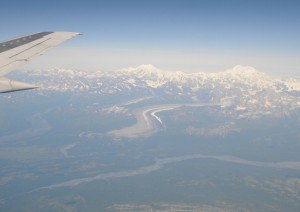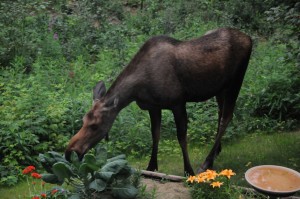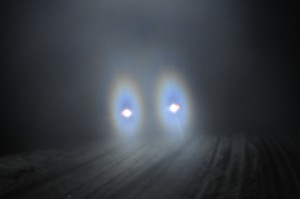Here is a full-resolution group photo (6.9 MB) from the 2013 light and color meeting, held in Fairbanks, Alaska during 5-8 August 2013. Thanks to Ken Sassen for being our host and conference organizer! (Photo by Joseph A Shaw)
Author Archives: Joe Shaw
2013 meeting followup
The 2013 meeting in Fairbanks, Alaska was a huge success! Thank you to everyone who participated, attended, or sent good wishes. We had a beautiful display of noctilucent clouds late on the meeting, as is shown in this image (copyright Joseph A. Shaw).
On the flight home, many people reported seeing great optical phenomena – including me (Joseph Shaw, Montana State University). I had superb displays of both noctilucent clouds and aurora as I flew through western Canada. Here are two samples …
Here is a link where you can view 260 of my pictures from this trip.
Registering prior to the 2013 meeting
It will be helpful if each participant registers before the 2013 light and color meeting. You can so online. The cost is $250 for a primary participant, including meeting registration, lunches on August 5. 6. and 7, and the evening expeditions (including the riverboat trip). The cost for an accompanying person is $50. For discounted student rates, please contact Dr. Ken Sassen (ksassen@gi.alaska.edu).
2013 Agenda is posted
The full agenda has been posted for the 2013 light and color conference. It is still evolving, so please be patient.
Agenda for 2013 Meeting
(updated 26 Aug 2013 – final agenda)
Light and Color in Nature, 5–8 August 2013 at the University of Alaska Fairbanks
Monday, 5 August
Session 1: Introduction, 0900-1030, Kenneth Sassen Chair
Welcome by Robert McCoy, Director of the Geophysical Institute
Opening Remarks by Kenneth Sassen, Committee Chair
0930 Invited: Atmospheric optics at the early Geophysical Institute, Glenn Shaw
1000 Keynote: Noctilucent clouds – ice clouds at the edge of space in the polar summer, Richard Collins
Coffee break (continued registration), 1030-1100
Session 2: Historical Optics, 1100-1200, Joseph Shaw Chair
1100: 2.1 The 1665 orange halo of Huygens’s father, Gunther Konnen
1120: 2.2 The 35 minute green flash observed at Little America on 16 Oct 1929: a retrospective study, James Lock
1140: 2.3 The Nuremburg halo display of April 19, 1630, Eva Seidenfaden
Lunch (at the Geophysical Institute Globe Room), 1200-1300
1300 Invited: Cloud Forms, Stanley Gedzelman
Session 3: Scattering Interference Phenomena, 1330-1430, Stan Gedzelman Chair
1330: 3.1 Revisiting the corona, Philip Laven
1400: 3.2 The heiligenschein, John Adam and Philip Laven
Coffee Break, 1430-1500
Session 4: Ocean Color/Optics, 1500- 1640, Philip Laven Chair
1500: 4.1 Colors of thermal pools in Yellowstone National Park, Paul Nugent, Joseph Shaw and Michael Vollmer
1520: 4.2 Caustics due to complex water menisci, Charles Adler and James Lock
1540: 4.3 Improvement of remotely sensed Kd (PAR) of shallow turbid water in the Yellow Sea, Bumjun Kil and Stephan Howden
Public Optics Demonstration, 1730-1900, Kenneth Sassen Chair
Halomator and spectrodrom – a basement laboratory of atmospheric optics, by Michael Grossmann, Alexander Haussmann, and Elmar Schmidt
Conference Reception at the Museum of the North (light dinner), 1930-2100
Tuesday, 6 August
Registration, 0800-0900
Session 5: Ice Crystal Halos/Arcs, 0900-1030, Michael Vollmer Chair
0900: 5.1 Invited: “Lowitz Arcs Revisited”, Robert Greenler, Les Cowley, and Robert Gorkin
0930: 5.2 Halos due to scattering by randomly oriented crystals, Gunther Konnen
0950: 5.3 Brightness profile of the 22 degree halo, Dave Lynch
1010: 5.4 Pyramidal halo phenomenon in Virginia June 21st, 2010, Elmar Schmidt, T. Alan Clark, A. Haussmann, and Claudia Hinz
Coffee break, 1030-1100
Session 5 continued: Ice Crystal Halos/Arcs, 1100 -1200, Michael Vollmer Chair
1100: 5.5 Streetlight halos, Walter Tape
1120: 5.6 Parry’s arc from nearby light sources in Deadhorse, Alaska, Kenneth Sassen and Colin Triplett
1140: 5.7 Halo simulation progress report, Stanley Gedzelman
Lunch (at the Geophysical Institute Globe Room), 1200-1300
Session 5 continued: Ice Crystal Halos/Arcs, 1300-1350, Michael Vollmer Chair
1300: 5.8 Laboratory Demonstration, Position-related spectra within experimental parhelia: Simple hands-on experiments explaining the perceived color of sun dogs, K.-P. Mollmann and M. Vollmer
1330: 5.9 Brilliant colors from a white snow cover, Michael Vollmer and Joseph Shaw
Session 6: General Observations, 1350-1430, Gunther Konnen Chair
1350: 6.1 Unusual optical phenomena from mountain sites, Claudia Hinz
1410: 6.2 Establishment of the global meteopark system, Lai Bixing
Coffee Break, 1430-1500
Session 7 Biological Colors: 1530-1640, Robert Greenler Chair
1500: 7.1 On the purpose of color for living beings: a new theory of color organization, Katia Deiana and Baingio Pinna
1520: 7.2 How can a fish hide in the open ocean?, Robert Greenler
1540: 7.3 Iridescent colors in spider webs, H. Joachim Schlichting
1600: 7.4 Structural color of the butterfly wing scale, S. Yoshioka
1620: 7.5 Total internal reflection as solar protection for the Saharan desert ant Cataglyphis bombycina, Priscilla Simonis and Jean Pol Vigneron
Session 8 Mirages: 1640-1700, Robert Greenler Chair
1640: 8.1 Visible and invisible mirages: comparing inferior mirages in the visible and thermal infrared spectral range, Michael Vollmer, Joseph Shaw, Paul Nugent
Riverboat Discovery Chena River Excursion and Dinner, 1900-2200
Wednesday, 7 August
Session 9: Rainbows: 0900-1030, Walter Tape Chair
0900: 9.1 Invited: The natural tertiary rainbow- A photographic first, M. Grossmann
0930: 9.2 Photographic observation of a natural fifth-order rainbow, Harald Edens
0950: 9.3 Polarization and visibility of higher order rainbows, Gunther Konnen
1010: 9.4 Recent rainbow revelations, Robert Greenler
Coffee break, 1030-1100
Session 9 continued: Rainbows, 1100-1200, Walter Tape Chair
1100: 9.5 New insights into the rainbow, Part 1, Jean Louis Ricard, Peter Adams, and Jean Barckicke
1120: 9.6 New insights into the rainbow, Part 2, Jean Louis Ricard, Peter Adams, and Jean Barckicke
1140: 9.7 Observation, photogrammetry, and analysis of a twinned rainbow, Alexander Haussmann
Lunch (at the Geophysical Institute Globe Room), 1200-1300
Session 9 continued: Rainbows, 1300-1430, David Lynch Chair
1300: 9.8 A physically based rainbow simulator taking the background into consideration, Moon R. Jung
1320: 9.9 Influence of non-spherical raindrop shapes on higher order rainbows, Alexander Haussmann
1340: 9.10 Flashes of light below the dripping faucet: an optical signal from capillary oscillations of water drops, Thomas Timusk
1400: 9.11 Digital Imagery Forum, A post-Faustian review of digital imagery: the good, the bad, and the weird, Dave Lynch, Leader
Coffee Break, 1430-1500
Session 10: Atmospheric Color and Polarization, 1500-1720, Raymond Lee Chair
1500: 10.1 Seeing, adapting to, and reproducing the appearance of nature, Mark Fairchild
1520: 10.2 What is the spectrum of skylight polarization? Joseph Shaw and Nathan Pust
1540: 10.3 Measuring haze’s effects on the colors and visible-wavelength spectra of clear skies, Raymond Lee
1600: 10.4 Views affected by a wavy air-water surface, Yoav Y. Schechner
1620: 10.5 Simulating dark sunlit clouds, Stanley Gedzelman
1640: 10.6 Shadows, Dave Lynch
The Light & Color Official Slide Show (“pretty picture session”), 1715 to whenever
Thursday, 8 August
Session 11: Astronomical Optics, 0900-1030, Charles Adler Chair
0900: 11.1 Invited: Twilight’s Belt of Venus, by Raymond Lee
0930: 11.2 Visibility of Sirius in broad daylight, Gunther Konnen and Piet Stammes
0950: 11.3 Some elementary but surprising facts about the sun’s location in the sky, A. James Mallmann and Steven P. Mayer
1010: 11.4 Earthshine brightness and visibility, David Lynch
Coffee break, 1030-1100
Session 11 continued: Astronomical Optics, 1100-1200, Kenneth Sassen Chair
1100: 11.5 The use of light and color in astrophysical imaging, Travis A. Rector, Zoltan Levay, Lisa Frattare, Jayanne Engllish, and Kirk Pu-uohau-Pummill
1120: 11.6 Lunar eclipse photometry across the world – first correlations, Elmar Schmidt
1140: 11.7 Using light and color to detect life on Earth-like extra-solar planets, Eyal Schwartz, Stephen G. Lipson, and Erez N. Ribak
Concluding Remarks and Challenge, by Kenneth Sassen
Conference Concludes: 1215
Afternoon Tour of Chatanika gold mining area (lunch) and UAF Poker Flat Rocket Range
Preliminary agenda posted
A preliminary agenda has been posted for the August 5-8, 2013 meeting in Fairbanks, Alaska. Authors should have received confirmation of their abstract acceptance via email. Questions about a specific abstract should be sent to Dr. Ken Sassen, conference chair (or as a backup, send questions to optics.submissions@gmail.com). General questions can be sent to Ken, to the gmail address, or posted here. See you all in Alaska soon!
Things to see and places to go
The city of Fairbanks was established in the early 20th century when gold was discovered nearby. Fairbanks sits at a low altitude (~136 m) in a broad river valley in central Alaska, between the Brooks Range of mountains to the north and the Alaska Range to the south. Fairbanks lies alongside the Chena and Tanana Rivers among rolling hills heavily forested with aspen, birch, pine, and spruce trees. Here is a list of some interesting things to see and places to go while visiting Fairbanks (in relatively random order).
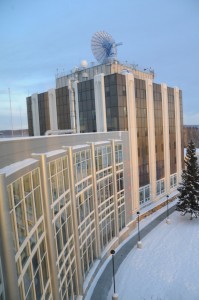
International Arctic Research Center and Geophysical Institute – site of the 2013 Light and Color in Nature Conference (J. Shaw photo).
University of Alaska – Fairbanks … the location of the light and color meeting … has much to offer, including the acclaimed Museum of the North, Native Art Center, Geophysical Institute (site of the meeting), and International Arctic Research Center.
Chena Hot Springs – A great weekend adventure located about 2 hours east of town on paved roads, this is a rustic hotel complex with bubbling hot springs. Chena Hot Springs Road is one of the best places for fishing and moose viewing. There is a shuttle van from Fairbanks to and from Chena Hot Springs.
Tanana Valley State Fair – this annual community event will occur August 2-11, 2013 – nicely overlapping the 2013 light and color meeting.
Creamer’s Field migratory waterfowl refuge is a beautiful place to take a morning or evening walk amidst local birds and nature.
Take a lunchtime or longer hike on the University of Alaska trails
Large Animal Research Station at the University of Alaska – Fairbanks, where you can see regional animals such as musk ox and caribou.
Take your picture by the 800-mile-long Trans-Alaska pipeline, an engineering marvel that pops up above ground in regions where a buried pipe could damage or be damaged by permafrost (permanently frozen earth). An ideal viewing point is located on the Steese Highway, just a few miles north of downtown Fairbanks.
Pioneer Park and the popular outdoor Salmon Bake, where you can learn about local history, dine on fresh Alaskan salmon or cod, and even rent a boat to enjoy the Chena River.
Local art galleries offer you the opportunity of viewing or even purchasing locally produced art.
– 2-3 hours south of Fairbanks and the home of Mt. McKinley (or Denali). Private cars can drive a modest distance into the park without a camping permit, after which you can travel by tour bus deeper into this beautiful wilderness
area. This makes a beautiful day trip from Fairbanks or a wonderful multi-day expedition.
Denali Highway – a winding road through the Alaska Mountain Range, connecting Paxton with the Denali National Park. This road provides a true view of Alaska Wilderness, but beware of walking too far off the road without bear protection. Bears love it here, too!
Alaska Railroad – connects Fairbanks, Denali National Park, and the southern coastal city of Anchorage. One of the greatest adventure in interior Alaska is the slow, swaying Alaska Railroad trip from Fairbanks to Denali Village (“swaying” is a result of building railroad tracks on permafrost) in Denali National Park. You can also choose to continue on to Anchorage for the flight home (Anchorage is like a more normal city).
Dalton Highway– a rough gravel road that goes all the way up to the Deadhorse oil fields of the Beaufort Sea (where it will not get dark in August!). The real treat on this trip is the Brooks Mountain Range – wild country loaded with incredibly glaciated terrain, good fishing, and animal viewing. Lodging includes camping and one trucker’s hotel in Coldfoot. There are VERY few people who have made this trip. You will need a SUV for sure.
Valdez – southern terminus of the Trans-Alaska pipeline. Located ~6-8 hours drive south of Fairbanks on paved roads that take you through the heart of the Alaska Range, with small glaciers you can hike to at Thompson Pass. Valdez is a nice tourist town with frequent tour boats into the gorgeous Prince William Sound where you can see disappearing glaciers and wildlife that often includes whales.
Wrangell-St. Elias National park – situated several hours east of Anchorage or ~6 hours south of Fairbanks, this area offers large accessible glaciers and mining town ruins.
Native villages like Nome and Barrowon the Arctic Ocean are accessible only by air via small planes, but offer interesting opportunities to see a part of Alaska that is very different from the cities of Anchorage and Fairbanks.
2013 meeting call for papers now online
Click here for information about submitting abstracts to the 2013 meeting.
2013 Call for Papers
Conference on “Light and Color in Nature”
August 5-8, 2013
Fairbanks, Alaska
Call for Papers
An International Conference on “Light and Color in Nature” will be held on August 5-8 at the University of Fairbanks, Alaska. The organizing committee is soliciting abstracts for talks at the conference. The topics addressed at the meeting include, but are not limited to, the following: rainbows; ice crystal halos; glories; coronas; iridescence; sky color;
atmospheric visibility; refraction effects; contrast phenomena; noctilucent clouds; optics of lightning; auroras; colors created by absorption and scattering in water and air; color and light in water and on water surfaces; iridescence and colors in biology and geology; atmospheric optics in history and archaeology; and computational techniques for calculating and rendering optical effects in the atmosphere and landscape.
For submission: please submit a 200-word abstract that includes title and author list (you also may include a color or gray-scale image that illustrates your topic). File formats accepted are plain text, pdf, doc, and docx. All accepted abstracts will be given as oral presentations. Abstracts may be submitted via email to optics.submissions@gmail.com. The deadline for abstract submission is Monday, April 15, 2013. The committee will review all abstracts and notify authors of acceptance by May.
Click here for registration … including options for submitting abstracts (if you , requesting travel assistance and/or reduced student registration rate).
Background
This will be the 11th in a series of Conferences held over the past 35 years:
1) “Meteorological Optics”, August 28-29, 1978, Keystone, Colorado
2) “Atmospheric Optics”, January 3-5, 1983, Incline Village, Nevada
3) “Meteorological Optics”, April 2-3, 1986, Honolulu, Hawaii
4) “Light & Color in the Open Air”, July 11-13, 1990, Washington, D.C.
5) “Light & Color in the Open Air”, June 16-18, 1993, State College, Pennsylvania
6) “Light & Color in the Open Air”, February 10-12, 1997, Santa Fe, New Mexico
7) “Meteorological Optics”, June 6-8, 2001, Boulder, Colorado
8) “Atmospheric/Meteorological Optics”, June 13-17, 2004, Bad Honnef, Germany
9) “Light & Color in Nature”, June 25-29, 2007, Bozeman, Montana
10) “Light & Color in Nature”, June 16-20, 2010, St. Mary’s City, Maryland
Applied Optics Feature Issue
Following each of the previous meetings, the Optical Society of America (OSA) has generously published a Feature Issue of one of its peer-reviewed journals. These Feature Issues draw heavily (but not exclusively) on contributions made at these meetings.
Journal of Optical Society of America, Vol. 69, No. 8 (August 1979)
Journal of Optical Society of America, Vol. 73, No. 12 (December 1983)
Journal of Optical Society of America A, Vol. 4, No. 3 (March 1987)
Applied Optics, Vol. 30, No. 24 (August 1991)
Applied Optics, Vol. 33, No. 21 (July 1994)
Applied Optics, Vol. 37, No. 9 (March 1998)
Applied Optics, Vol. 42, No. 3 (January 2003)
Applied Optics, Vol. 44, No. 27 (September 2005)
Applied Optics, Vol. 47, No. 34 (December 2008)
Applied Optics, Vol. 50, No. 28 (October 2011)
In line with this tradition, a Feature Issue of Applied Optics will be published during 2014.
Practical information
A dedicated web-site (http://lightandcolorinnature.org/2013-conference/) will be updated regularly to provide the latest information about the conference (e.g. accommodation, venue, schedule, etc.).
Alaska 2013 housing now available
Please visit the 2013 conference page to see the latest update on housing, which needs to be booked early .


